Khan Lee (李崗) is interested in history, but not the kind in textbooks. He wants to know what Taiwan looked like before the Japanese and the Chinese Nationalist Party (KMT) came, and how people ran businesses, went to school or trained an army. In 2008, the film director and producer came across a descendant of Wufeng’s (霧峰) Lin (林) family — one of Taiwan’s five great historic clans — and believed he had found everything he ever wanted to know.
“The family has experienced and survived a tumultuous chapter in modern history. Through it, we can see the changing relations between Taiwan and the rest of the world,” he says.
Five years and more than NT$30 million later, Khan Lee and a top-notch team including five historians released Attabu (阿罩霧風雲). The documentary film, which hit the mainstream market earlier this month, follows the fascinating history of the Lin family, starting from the Qing Dynasty when its founding ancestors migrated to Taiwan. The clan subsequently took root and thrived in Greater Taichung’s Wufeng, called Attabu in the language of Lowland Plains Indigenous Peoples (also known as the Pingpu Aborigines, 平埔族), who inhabited the region before they were killed, displaced or assimilated into Han Chinese society.
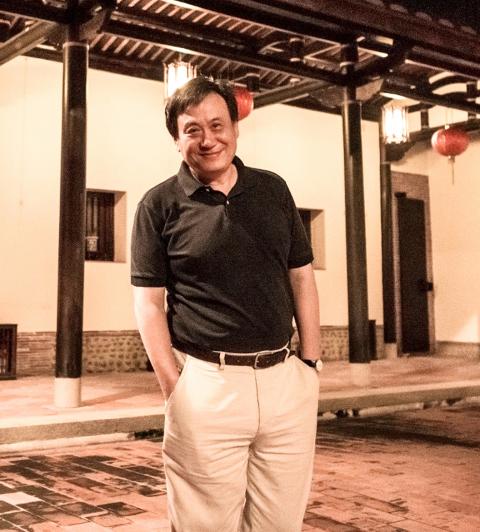
Photo Courtesy of Encore Film
Seeking history
It’s not surprising that the tale of the Lin clan — an immigrant family — strikes a chord with Khan Lee.
He belongs to the so-called Mainlander Second Generation (外省第二代): His father moved to Taiwan with the KMT troops from China after World War II.
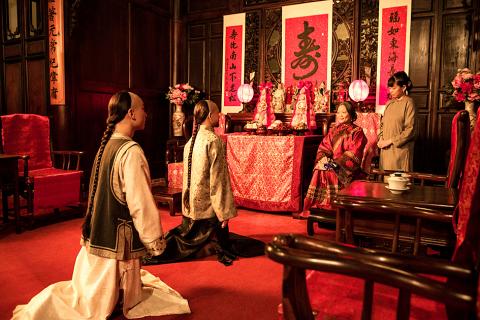
Photo Courtesy of Encore Film
“But I am not going to spend five years making a film about the Lee family in China. I was born and grew up in Taiwan. I want to love Taiwan, but I suffer from amnesia. I don’t remember my history, my home. I need to know exactly what I love,” Khan Lee, the film’s producer, told the Taipei Times.
So Khan Lee studied the Lins.
He compares the clan with the Corleone family in Francis Ford Coppola’s Godfather trilogy, in which the first-generation settlers “needed to kill and fight over resources in order to make a place for themselves in a hostile, foreign land.”
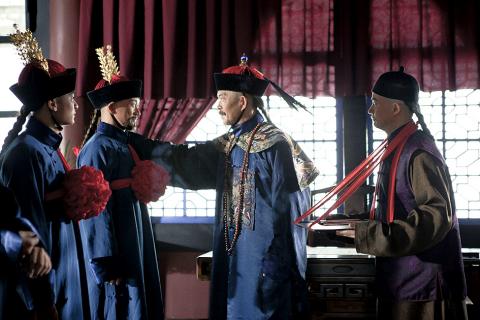
Photo Courtesy of Encore Film
The Lins, however, took their fight for survival to a professional level.
Noted for their military prowess, the militia family was recruited to help suppress the Taiping Rebellion (1850-1864) against the ruling Qing Dynasty.
During the Sino-French War, the Lins were recruited again to Keelung, where they successfully stopped an invasion by the French army. In return, they were awarded titles by the imperial court and tremendous wealth in the form of a camphor monopoly, until the cession of Taiwan to Japan in 1895.

Photo Courtesy of Encore Film
To Khan Lee, Wufeng’s Lin family is the epitome of Taiwan, which is forever caught in between the world’s great powers.
“The family always has to make choices — choices to side with the central government or regional forces, to become Japanese or Chinese, to side with Chinese nationalism or communism,” he notes.
Filling the void
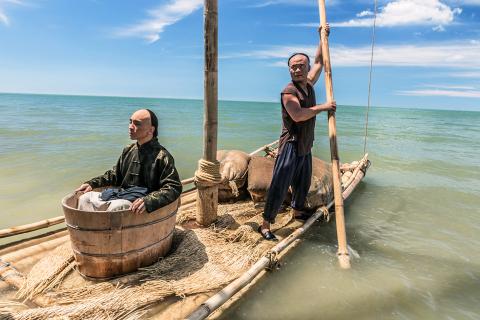
Photo Courtesy of Encore Film
Khan Lee expects the film to face intense scrutiny, not just by clan descendants but also by people in academic and political circles. That’s because Attabu deals with a controversial chapter of Taiwanese history that is often distorted — or altogether ignored — to serve different political interests, he says.
“The KMT doesn’t mention the family because its members were killed during the White Terror era, while the DPP has no interest in the part of Taiwanese history when men wore queues,” he adds. “Meanwhile, the Chinese Communist party makes television drama in which the inhabitants of Taiwan speak with a perfect Beijing accent and love their fatherland.”
In Attabu, Khan Lee tries to depict the era faithfully. Using historically accurate props and costumes, Khan Lee and his team are able to craft meticulous reconstructions of bygone events, allowing viewers to “actually see what Taiwan looked like and then fill in the blanks.”
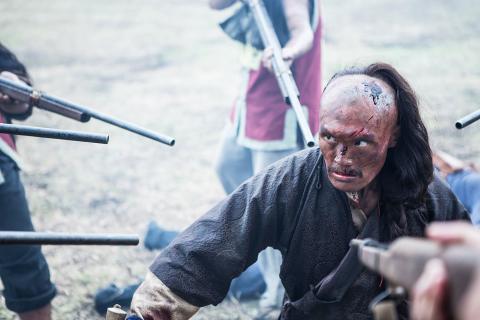
Photo Courtesy of Encore Film
Early in this process, Khan Lee was saddened to find that Taiwan’s film industry — after two decades of decline — had largely lost the knowledge, skills and talent required to make a convincing historical film. Khan Lee turned to veteran art director Lee Pao-lin (李寶琳), who has mostly worked in China and whose portfolio includes Lust, Caution (色,戒) by Khan Lee’s older brother, Ang Lee (李安). Lee Pao-lin helped decide how the buildings, people and the surroundings should look in the Taiwan of over a century ago. Every prop was made by a team in Beijing and shipped back to the Taiwanese crew as a loan.
“It is truly tragic when a place can’t even tell its own story,” Khan Lee laments. “Wei Te-sheng (魏德聖) certainly wouldn’t have had to spend NT$700 million to make Seediq Bale if we still had the knowledge and skills.”
With the release of Attabu, Khan Lee wishes to attract enough funding to complete the second part of the project, which tells the story of the Lins under Japanese rule and after the arrival of the KMT.

Photo Courtesy of Encore Film
“I was 51 years old when I first started the project. Now I am 56,” Khan Lee says, “I feel an anxious need to speed up and tell our own stories. Otherwise, they may be lost forever or told by others who will interpret our history differently.”

Most heroes are remembered for the battles they fought. Taiwan’s Black Bat Squadron is remembered for flying into Chinese airspace 838 times between 1953 and 1967, and for the 148 men whose sacrifice bought the intelligence that kept Taiwan secure. Two-thirds of the squadron died carrying out missions most people wouldn’t learn about for another 40 years. The squadron lost 15 aircraft and 148 crew members over those 14 years, making it the deadliest unit in Taiwan’s military history by casualty rate. They flew at night, often at low altitudes, straight into some of the most heavily defended airspace in Asia.

Beijing’s ironic, abusive tantrums aimed at Japan since Japanese Prime Minister Sanae Takaichi publicly stated that a Taiwan contingency would be an existential crisis for Japan, have revealed for all the world to see that the People’s Republic of China (PRC) lusts after Okinawa. We all owe Takaichi a debt of thanks for getting the PRC to make that public. The PRC and its netizens, taking their cue from the Chinese Communist Party (CCP), are presenting Okinawa by mirroring the claims about Taiwan. Official PRC propaganda organs began to wax lyrical about Okinawa’s “unsettled status” beginning last month. A Global

Taiwan’s democracy is at risk. Be very alarmed. This is not a drill. The current constitutional crisis progressed slowly, then suddenly. Political tensions, partisan hostility and emotions are all running high right when cool heads and calm negotiation are most needed. Oxford defines brinkmanship as: “The art or practice of pursuing a dangerous policy to the limits of safety before stopping, especially in politics.” It says the term comes from a quote from a 1956 Cold War interview with then-American Secretary of State John Foster Dulles, when he said: ‘The ability to get to the verge without getting into the war is

Like much in the world today, theater has experienced major disruptions over the six years since COVID-19. The pandemic, the war in Ukraine and social media have created a new normal of geopolitical and information uncertainty, and the performing arts are not immune to these effects. “Ten years ago people wanted to come to the theater to engage with important issues, but now the Internet allows them to engage with those issues powerfully and immediately,” said Faith Tan, programming director of the Esplanade in Singapore, speaking last week in Japan. “One reaction to unpredictability has been a renewed emphasis on